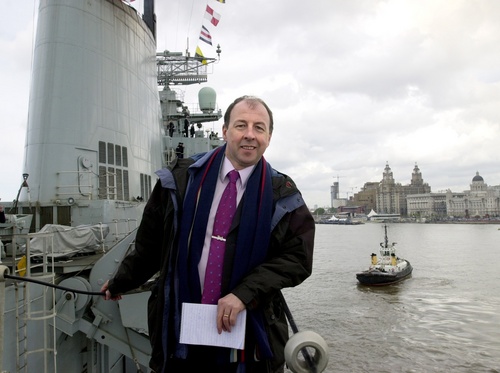WATCHING TV images of the bombing of Syrian cities such as Aleppo as innocent civilians run for their lives – often unsuccessfully – two main thoughts hit you. Firstly, deep sympathy for the situation they find themselves in through no fault of their own; then secondly a more selfish sense of being profoundly grateful this is not your fate.
Yet preparing a talk for the Battle of the Atlantic Conference at the Western Approaches Museum, organised by Maritime History North, this week made me realise more than ever how just such a dire situation was inflicted on the citizens of Liverpool within living memory, on the very streets we walk around safely today.
I say within living memory, but of course the years are rolling on and those with actual first-hand experience of the Battle of the Atlantic, which raged throughout WWII, from 1939 to 1945, are rapidly dwindling in numbers.
Liverpool was involved from the first day of the war when the liner Anchor Donaldson liner, SS Athenia, packed with passengers, was torpedoed off the coast of Northern Ireland, sailing from the Mersey to Canada. The U-boat commander’s excuse was that he thought Athenia was an armed merchant cruiser and therefore a legitimate target.
This was just a ghastly taster of what was to come. In all some 4,000 innocent citizens lost their lives in the Liverpool Blitz, with the worst pummelling during the week of May 1-8, 1941, when nearly 400 German bombers attacked the city and the port, almost 77 years ago to the week.
The Liverpool docks (including Bootle and Birkenhead) were the key target: as the UK’s top port it handled 95% of imports and Britain could not have fought the war without the stream of materials coming in on the convoys from North America. It simply had to keep functioning or the country was doomed.
Yet as senior RAF chiefs admitted, it was practically impossible to defend the city, as once France fell to the Germans, the Luftwaffe could fly almost unimpeded over the English Channel and up the Irish Sea, attacking the city from the west.
Post-war, the Luftwaffe pilots admitted there were no specific targets, their maps had large circles drawn around the city and everything in it was fair game. After Hitler lost the Battle of Britain over south east England and therefore stopped invasion plans, his next move was to pound the port into oblivion to halt war materials arriving. Unfortunately, the local population became sitting ducks, suffering horrific deaths, injuries and losses of loved ones, not to mention their homes and surroundings.
As you walk around the city, now enjoying its revival as a tourist destination it is hard to imagine those dark days. However, a brief inspection of the buildings soon shows the gaps created by the Blitzkrieg and the infilling after the war was over. In fact, some bomb sites, such as that by the Pig and Whistle pub in Chapel Street still remain. That is the most visible legacy of what the people of Liverpool suffered and the lucky ones survived, what wartime prime minister Winston Churchill called their “unconquerable spirit”.

